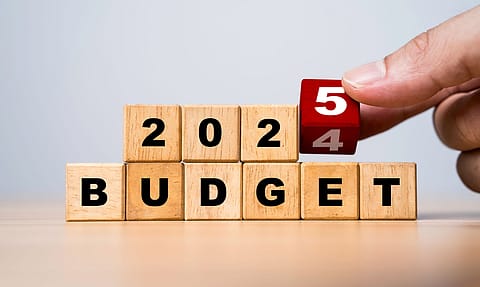Budget 2025: Focus on increased spending and project execution in building India’s future
Various reasons have been attributed to the underspending, including the 2024 general elections.

Infrastructure in budget 2024 and current spends
Budget 2024 had set a target of spending INR 11.1 lakh crore for infrastructure development, with road and rail infrastructure accounting for ~INR2.7 lakh crore and ~INR2.5 lakh crore, respectively. With actual spends till December 2024 being about 46%, the target is likely to be underachieved by a margin of about 10% by end of March 2025.
Various reasons have been attributed to the underspending, including the 2024 general elections. The pipeline of projects was lower due to land acquisition and other issues, and this reduced spending target has offset any revenue shortfall, including disinvestment.
Infrastructure as a tool for economic development
Every rupee spent on infrastructure generates over INR2.5 in GDP, considering the employment created and downstream demand for products and services. Given the government’s aim to transform India into a US$7 trillion economy by 2030, the infrastructure sector spending will play a pivotal role in this transformation.
On a year-on-year basis, infrastructure spending should ideally increase by 2–3 times the projected yearly GDP percentage increase. This will create strong downstream demand and drive GDP growth. However, apart from allocating budgets, the government needs appropriate efforts and coordination across ministries to develop a pipeline of projects and smooth awards and execution to ensure these budgets are expended in the year.
Focus areas
Recommended Stories
Roads and highways
In case of the road network, while focussing on expanding the network linked with the Bharatmala programme, the government should also look to improve practices around land acquisition, project awards and private participation, especially in BoT projects. Safety remains a key concern, and the upcoming budget should focus on technology upgrades to older roads, including the tolling infrastructure and design flaws, as this would help reduce accidents. The government could also work with states to designate more roads connecting major infrastructure assets, such as ports and airports or major tourist destinations into national highways.
Rail
With the introduction of various new services at higher speeds, such as the Vande Bharat, safety has gained immense traction, including the signalling and telecommunication infrastructure. Budgetary allocations to the rail sector should continue and be ramped up in the upcoming budget to further enhance the rail network’s reach, speed and safety. Furthermore, given the scale of capex and execution capability needed to improve the speed of the Indian passenger and freight network and the overall quality of rail infrastructure, including stations, the government should assess, structure and launch some projects on a PPP basis.
(INR CR)
Port and allied logistics
A well-developed logistics infrastructure will make India more competitive in producing products for domestic consumption and exports. Developing port-focussed logistics infrastructure in the hinterland would eliminate bottlenecks and improve cost and time efficiencies, making Indian ports more attractive. With the sanctioning of the Vadhavan port in Maharashtra, this gains significance as allied logistics infrastructure is needed to make port projects successful.
Urban development
Regarding urban development, the government must focus on de-congesting metro cities. In TomTom's recently published Traffic Index 2024, 76 percent of cities witnessed a decline in average speeds of commute, with many Indian cities featuring in the global top 10 list or on the list where travel times have increased. Timely completion of metro rail projects, including last-mile connectively, across these cities along with other mass rapid transport projects and augmentation of the road network in and around the city, would help in decongestion. This can be achieved through increased budgetary allocation and monitoring of the progress of these projects.
Other areas
Appropriate transmission and distribution infrastructure investments must supplement the government’s ambitious renewable energy and energy storage plans. This would further assist the country in decreasing its dependence on non-renewable energy sources and achieving net-zero targets by 2070.
The government should consider more investments and private participation in circular economy sectors, including water and waste, to ensure better management of water, a scarce resource, and develop a modern circular economy. Policy changes to attract investments in sectors such as compressed biogas and hydrogen should also be considered.
Private participation in infrastructure building
Making projects more bankable and ready to implement is critical in increasing private sector participation in infrastructure projects. The government should re-evaluate its approach to risk sharing with private players and implement mechanisms such as revenue guarantees for a defined period, viability gap funding, assistance through government-backed organisations such as IIFCL, greater certainty on regulatory approvals, land acquisition and other similar mechanisms.
Conclusion
Transformation in India’s infrastructure offers immense potential to reshape the country’s economy. Consistent policymaking and budgetary allocation for capital spending, streamlining approval and awareness processes, and sustained efforts to closely monitor infrastructure projects will be crucial to their successful completion and long-term sustainability.